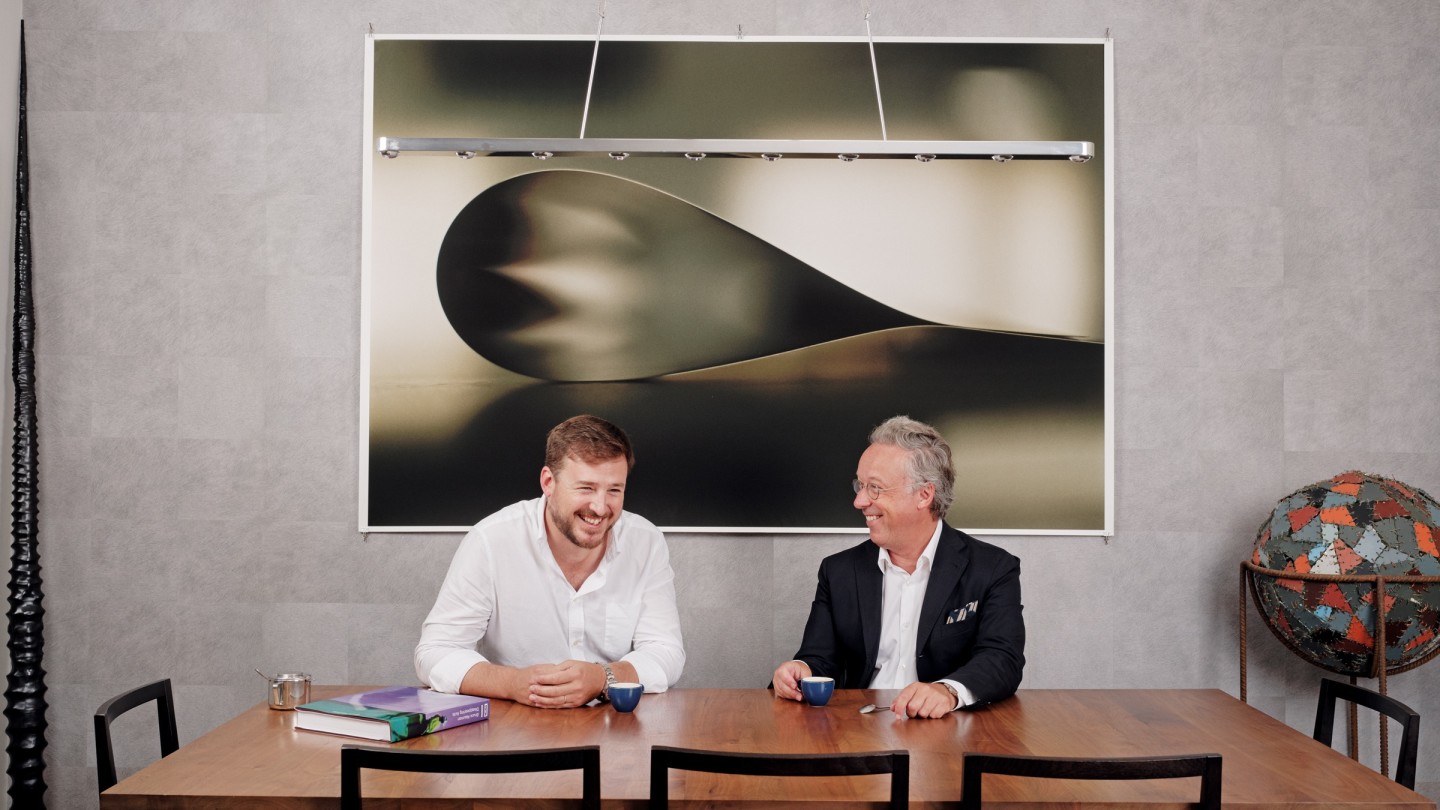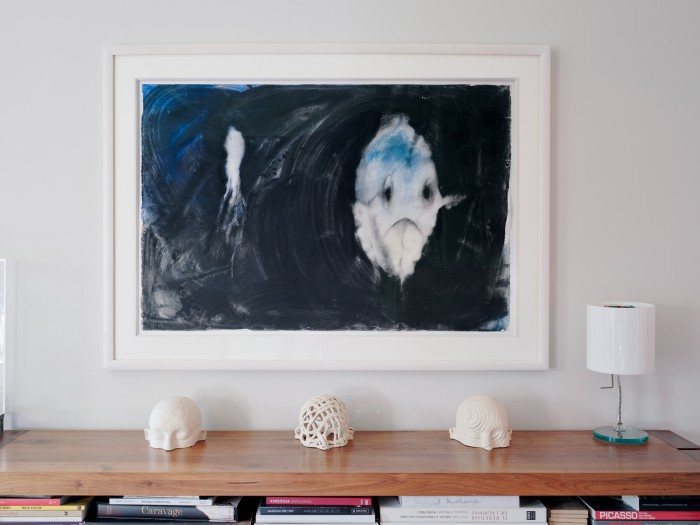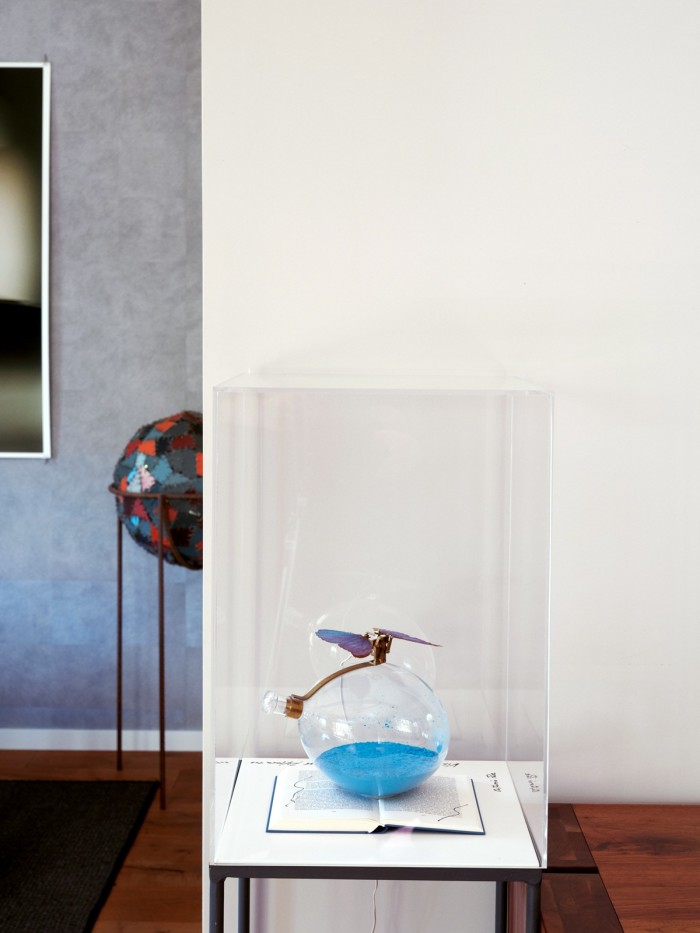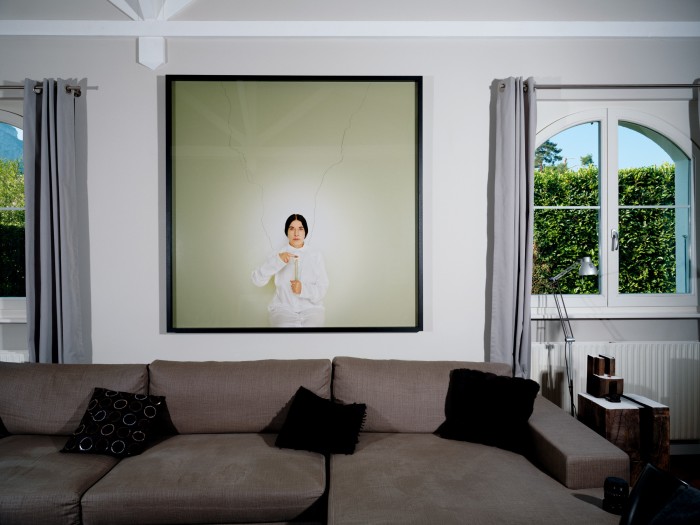Shocking for shocking’s sake? An insider’s guide to collecting conceptual art

Roula Khalaf, Editor of the FT, selects her favourite stories in this weekly newsletter.
“I don’t care about the medium. I don’t really care where the artist comes from.” What collector Lionel Aeschlimann does care about, however, is art that “engages”, that offers an insight into everyday life. At his Geneva home, the managing partner of private Swiss bank Mirabaud is confronted daily by Marina Abramovic’s Artist Portrait with a Candle (2013), a large, striking self-portrait. “Her face is full of serenity, even though she’s burning her finger,” he says. “It speaks of the tension between being in the world and of the world. It’s very soft but very strong at the same time.”
The quietly spoken collector is well versed in the nuances of contemporary art, an interest that was sparked by friends. “Little by little, I discovered a new world,” explains Aeschlimann, who made his first significant purchase in 2004 – a 139cm-long but just 12cm-high landscape painting by Philippe Favier. Today, he owns around 200 pieces, from photography by Turner Prize winner Wolfgang Tillmans to sculpture by Swiss duo Fischli & Weiss. “For a very long time I denied the fact that I was collecting,” adds Aeschlimann, who likes to rotate the works on display. “But when there’s no room left on your walls, and you cannot walk into a room because there are too many things in it…”

Aiding and assisting him in this is Barth Johnson, the gallerist and art adviser behind Wilde Gallery, which has outposts in Basel, Geneva and Zürich. The pair met 12 years ago through a mutual friend when Aeschlimann was working as a lawyer. “He was much nicer at the time,” jokes Johnson, demonstrating a closeness that continued to develop when Aeschlimann moved to Mirabaud in 2010. “He brought with him a passion for art and then convinced all the partners at the bank to go on an art-buying adventure.”
Mirabaud now boasts more than 230 artworks across its 16 offices. In Geneva there are pieces by Danish-Icelandic artist Olafur Eliasson and Los Angeles-based Jim Shaw, best known for his graphic drawings; in Paris, a sculpture by pop artist Sylvie Fleury sits alongside a 1960s series of photographs by German duo Bernd and Hilla Becher. “When I buy for the bank, I feel responsible,” says Aeschlimann. “People trust us to preserve their money, make it grow. We have to think carefully about all the variables – microeconomics, macroeconomics, monetary policies, but also psychology, politics, geopolitics – that can influence the price. Which is why it’s key to rely on somebody like Barth, who knows the market better than I do.”

That’s not to say Johnson is steering the collections; often it’s Aeschlimann who finds pieces or asks Johnson to source something specific. “I try to be as radical as possible,” says Aeschlimann, “but I don’t want to be shocking for shocking’s sake. And, of course, I can go a bit further in my own collection.”
Nor does he agree to all of Johnson’s suggestions and has passed on works by Teresa Margolles and Paul McCarthy. “There was also a body of work by Spanish artist Santiago Sierra that was too political for the bank,” says Johnson. One of the more radical artists Aeschlimann has in his own collection is Wim Delvoye. The Belgian neo-conceptualist has tattooed pigs and created a faeces machine: Aeschlimann opted for the rather more muted Concrete Mixer (2010), a neo-gothic, 93cm-high sculptural version of a construction-site machine.
Such conceptual artworks aren’t your average decor. The Fischli & Weiss sculpture Untitled (2005) looks like a wooden pallet with a sponge on it – yet these everyday objects are facsimiles made from polyurethane. “It’s been causing me quite a bit of trouble,” says Aeschlimann of its location in his sitting room. “But it’s a great talking point. For many years, an artist was judged by his ability to copy nature. Instead of copying something noble and beautiful, this is about the most trivial thing you can imagine.”

Works on rotation in his home also include one of Tillmans’ Paper Drop images (2006), depicting photographic paper in abstract form (another in the series sold for £162,500 at Sotheby’s last year); Rebecca Horn’s Le Papillon (2000), featuring a mechanical butterfly atop a bottle of blue powder; and Chaos + Repair = Universe, a 2014 sculptural patchwork globe by French-Algerian artist Kader Attia. The latter is part of a series exploring the idea that destruction and reparation are essential to the creation of beauty. All give pause for thought.
“Contemporary art is a way to talk about important stories – love, life, death, the environment, politics,” says Aeschlimann, adding that he has a long-term view of his artistic investments. He has no problem with patience. It took two years for Johnson to source a classic Allan McCollum installation from his Plaster Surrogate series (1982-89). And neither Johnson nor Aeschlimann is interested in flipping work for quick profits. “The flipping that happened around 2010 – buying a Cory Arcangel piece for $15,000, selling it for $150,000 – just doesn’t happen any more,” says Johnson. “A lot of people try to do it, but they always lose, as there is no passion, there is no joy.” In this corner of Geneva, however, both are clearly abundant.
Comments